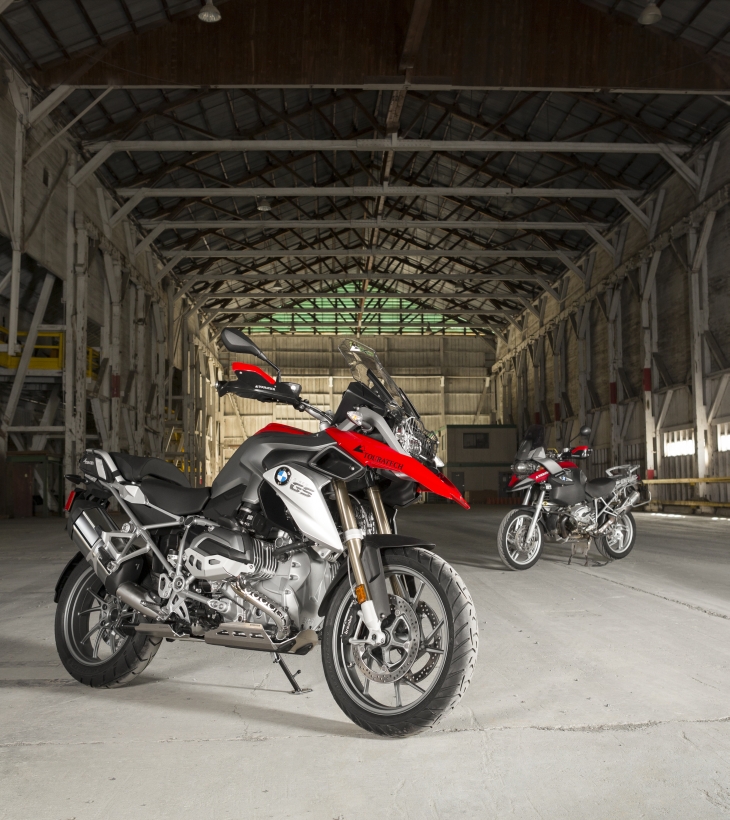
Any day a new motorcycle shows up at our shop is a good day. We recently took delivery of our 2013 BMW R1200GS featuring the all-new water-cooled opposed twin engine, dynamic ESA, and nearly every other option available. It just so happened that this new bike was the same lovely red color as my 2005 R1200GS, so we quickly decided that some back-to-back testing was in order.
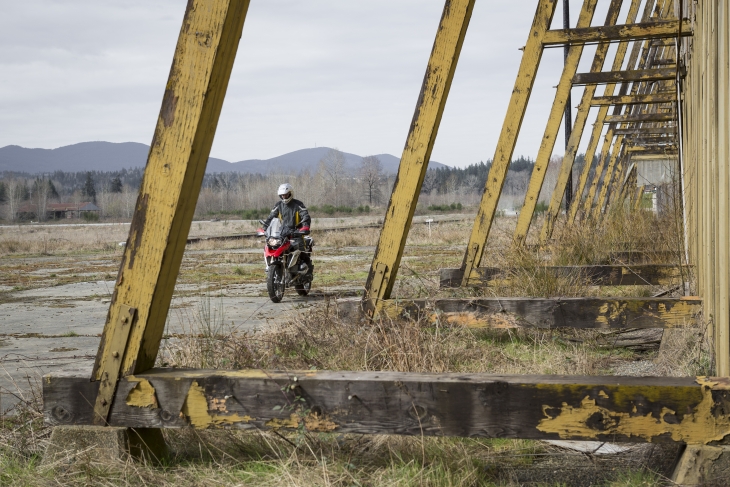
When asked if I would be interested in riding the new R1200GS and writing a review, I leapt at the opportunity to better define the differences between BMW’s new bike and the one I’ve spent 5 years riding. Early the next morning, after installing a few essential Touratech accessories, we left our Seattle showroom aboard two bright red BMWs and headed east on Interstate 90 toward the sleepy town of Snoqualmie, WA.
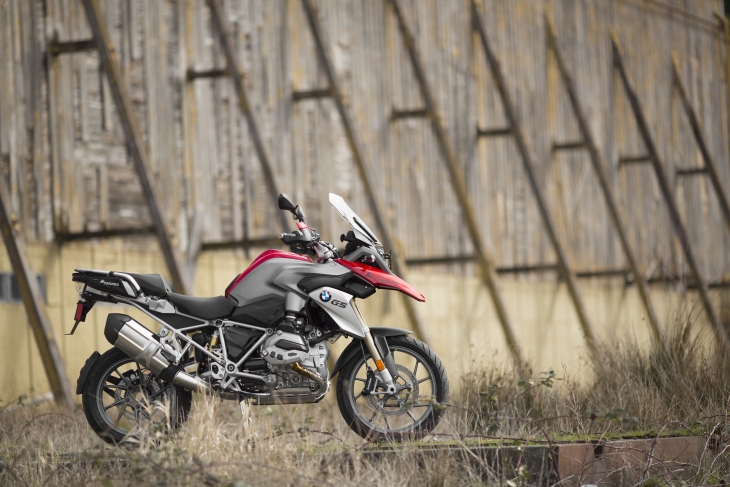
Nestled in the woods just outside of Snoqualmie was our destination for the review, a 300+ acre property that was once the home of a large saw mill and timber operation. The abandoned buildings and surrounding grounds offer an interesting mix of pavement, gravel and off-road obstacles, a perfect place for a comparison of the rookie and veteran boxers.
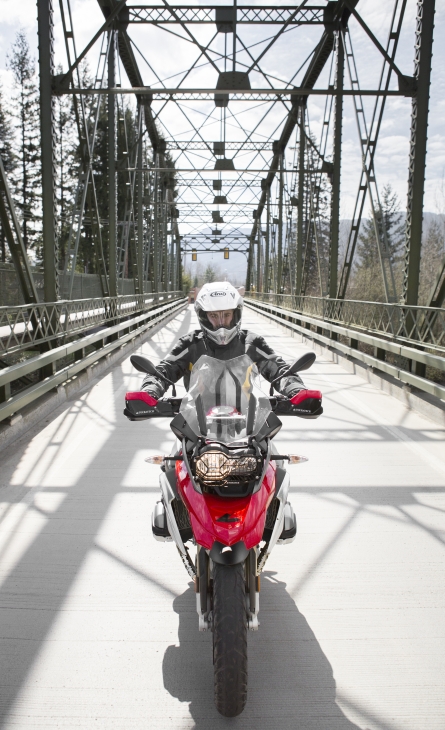
Ergonomics
One of the first things I notice are the new adjustable levers, which are easy to reposition with gloves on while seated on the bike. The clutch pull is much lighter than on the previous model GS. All of the buttons are very similar to the 2013 F800GS, which no longer has the paddle style blinker controls. The grip heater and high-beam controls aren’t rocker toggles anymore, but are now operated with your index fingers. The high beam control is also built into the high beam flasher switch, which opens up more real estate for new function control buttons.
The steering geometry feels a touch lazier on the water-cooled bike, taking a bit more rider input to change direction. This could be due to the tire sizes fitted to the new bike, which are wider than those on the oil-cooled version. The front tire width has increased from 110mm to 120mm and the rear has grown from 150mm to 170mm. At speed, the bike corners great and is very neutral mid-corner.
The bars feel closer to the seat and the bike’s ergonomics are a much better fit than the previous model for a guy my size: short and stocky. Additionally, I find the seating position to be much more comfortable than the oil cooled version. The width of the bike between the knees is dramatically narrower than the old bike and the standing position is much nicer as a result.
The windscreen manages airflow much like Touratech’s Desierto windscreen and is very easy to adjust with the knob, which can be operated with one hand even while riding. At high speed there is a bit of a flutter to the windscreen when it’s in the highest position, but that is a small price to pay for very comfortable, and conveniently adjustable, wind protection.
Our bike came with a brake pedal that was placed very low for operation in the seated position and far too low to be effective while standing. The good news is that the pedal location is adjustable.
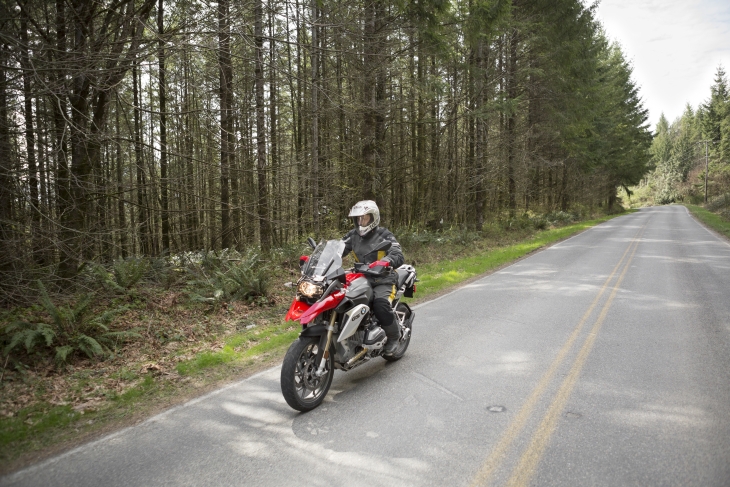
On-Road Performance
The new R1200GS feels incredibly smooth going down the highway. At 4,000 RPM in 6th gear, the bike cruises along at 70 MPH. I feel that this bike doesn’t need to work as hard as the oil-cooled bike at speeds around 80MPH. In fact, at these higher speeds I would be completely comfortable engaging cruise control and riding until the fuel light kicked on.
After riding the bike to and from town, I noticed that the radiator fan seem to come on around 210 degrees, but didn’t stay on very long. The fans blow the hot air down, rather than back onto me, which will be nice for rides in higher temperatures. I really look forward to seeing how the cooling system performs in hot weather on slower paced-roads.
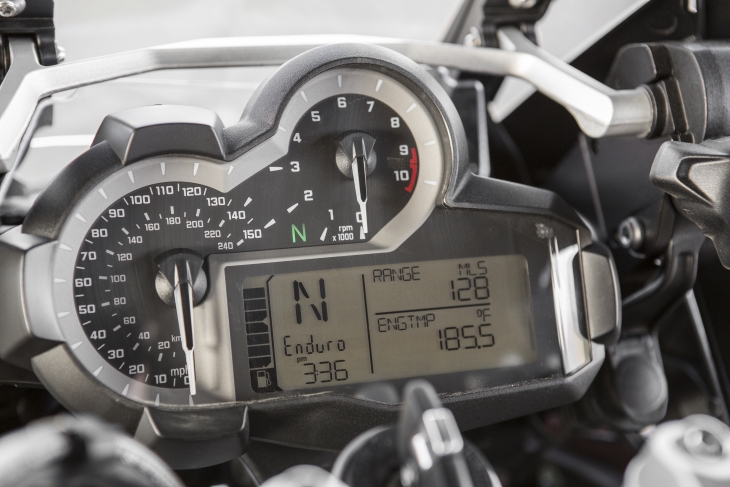
Electronics
The electronics package on the new bike is a giant leap in the technology available to the GS rider. BMW used many concepts and technologies from the S1000 and K1600 when designing the bike. The electronically-controlled throttle bodies and fly-by-wire throttle have made it possible to integrate the ASC (traction control), ABS, and ESA (electronic suspension) in ways that were really lacking in the oil-cooled bikes. The new bike feels like a much more cohesive system of rider aids is at work behind the scene. I am happy to report that both the ASC and ABS can be quickly toggled on or off any time the bike is stopped which is great for those of us who prefer to ride in “full manual” at times.
I am that guy who uses cruise control all the time in my car. My obsession with cruise control was previously limited to a throttle lock on my 2005 R1200GS, so I was very intrigued to see how ‘real’ cruise control would work on a motorcycle. After my first ride, I was impressed with how BMW put this feature together. The controls and interface are very intuitive. BMW tuned the cruise control so that it comes on slowly and in a predictable fashion, which minimizes impact on the rider when adjusting or resuming speed. And let’s be honest, cruise control is a perfect tool to keep you from speeding on long, boring sections of road.
There are a number of other small electronic enhancements on the bike that won’t grab headlines but make every day riding a bit easier. The bike has the ability to check its own oil level at startup and will notify the rider when additional oil is needed. When used with the BMW Navigator GPS, the date and time settings on the bike will be automatically updated by satellite. When you run the fuel tank down to reserve, the GPS is notified by the bike and will pop up a list of the nearest fuel stations on its screen. The GPS unit itself can be operated directly from the handlebar by the twist and tilt controller adapted directly from the K1600. Altogether, the new electronic offerings have helped to refine the riding experience and make the new bike more sophisticated.
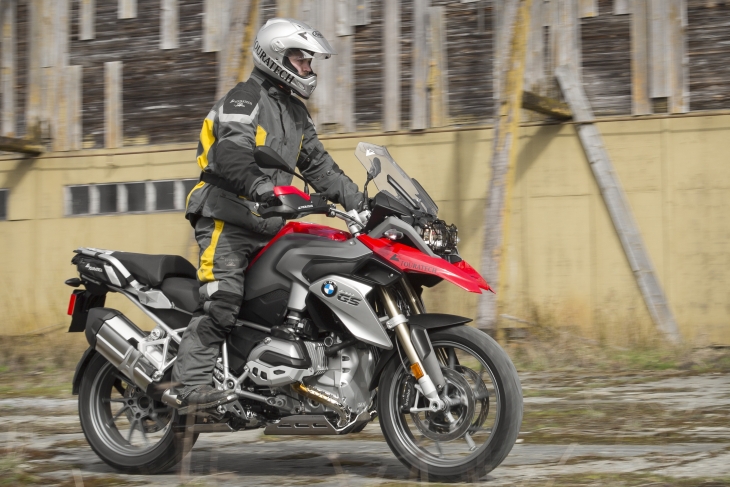
How It Works – Fly by Wire Throttle
The opening of the throttle bodies is controlled by two separate electric motors. The rider’s throttle request is sent directly from the grip twist sensor to the Engine Control Unit (ECU) and converted into a specific throttle position based on which ‘Ride Mode’ is selected. The previous generation R1200GS had an 85-degree throttle turn, while the new bike has an easier-on-the-wrist 70-degree throttle turn.
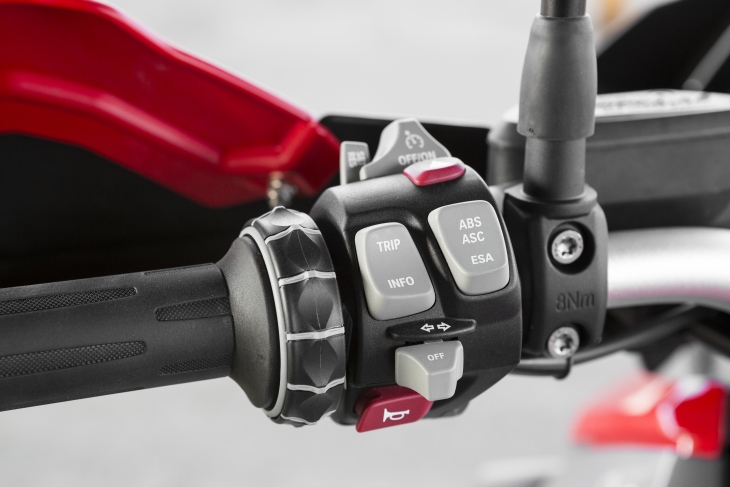
Ride Modes
The water-boxer has five different ride modes that dole out different levels of computer intervention to the throttle, ABS, ASC and ESA to improve the way the bike behaves in different environments. The five modes are: Rain, Road, Dynamic, Enduro and Enduro Pro. The settings can be selected while riding by pressing the ‘Mode’ button on the throttle-side switch pod. The mode selection will take effect when the motorcycle makes a complete stop.
Rain – This mode provides a softer throttle, generous amounts of computer intervention to prevent wheel slip, and the standard ABS functionality that limits tire lock-up under braking. In rain mode, the Dynamic ESA is set to soft by default but allows the rider to choose between soft, normal or hard damping options.
Road – This setting offers standard throttle response (similar to oil-cooled models) and traction control tuned for dry pavement giving the rider full power and only intervening if wheel slip is detected. Road mode has standard ABS as in Rain mode. The dynamic ESA is set to normal, but allows the rider to select soft or hard damping options.
Dynamic – Tuned for aggressive riding, this setting gives a quick-turn throttle that applies power much more quickly. The traction control allows more wheel-slip than Road mode, allowing for more rear- versus front-wheel spin before the computer backs off the power. The ABS setting is the same as Road and Rain mode. The Dynamic ESA is in the hard setting, but soft or standard can be selected by the rider.
Enduro – This mode provides the same soft throttle curve as Rain mode – and even less active traction control than Dynamic – allowing more sliding of the rear wheel and moderate front wheel lift. ABS intervention is reduced for improved braking on loose dirt or gravel conditions. Dynamic ESA is set to soft to improve traction over bumps, but can be changed to hard by the rider. (Normal damping is not offered in Enduro mode.) People looking to ride off-road routes like the Continental Divide or a Backcountry Discovery Route will find this mode most suitable.
Enduro Pro – This setting can only engaged by inserting an ‘encoding jumper’ plug under the seat, and was untested at the time of this review due to a firmware update still being refined by BMW. Enduro Pro is reported to dramatically reduce the traction control and disable rear wheel ABS while retaining a small amount of ABS for the front wheel. The ESA is set to hard in this mode but can be changed to soft by the rider.
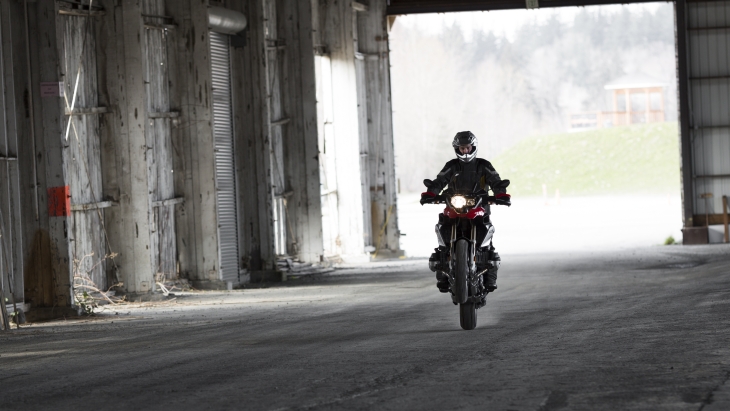
After riding the new bike, I feel that most riders will be more comfortable off-road with the ABS and ASC activated at their lower levels, such as in the Enduro and Enduro Pro modes. This will make the bike much safer to ride off-road than with previous models.
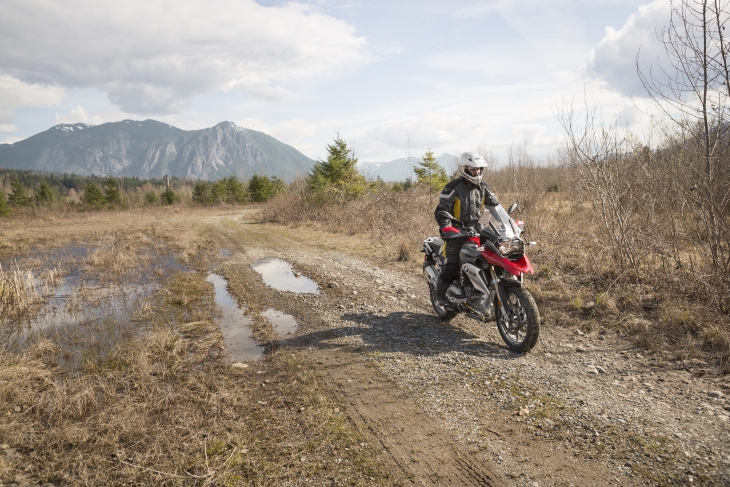
Clutch & Gearbox
One of my favorite new features is the wet clutch, which bites just like it should. I never realized how soft the clutch was on the oil-cooled boxer until I rode the water-cooled version. I also never thought I’d miss the way my 2005 GS shifts into first at a stop light; it’s delicate process I had to learn, but over the years I gained enough skill to make that shift nearly silent. On the new water boxer, however, the shift into first from neutral makes a palpable and audible clunk because of the drag from the wet clutch. It is really more like the way Japanese bikes feel, which is a bit strange to folks coming straight off the oil-cooled boxers. The gear ratios seem very similar to the old bike, with the exception that second gear felt taller and a bit more pavement-oriented.
The clutch on the new bike is also equipped with a feature that BMW calls ‘anti-hopping,’ which acts like a slipper clutch to smooth out engine-braking. I think that most people riding this bike won’t even notice it, but the ‘anti-hopping’ feature does make aggressive or even accidental downshifts more manageable. On the old bike, when a rider was hard on the brakes coming into a corner and downshifted suddenly, the back tire had a tendency to slide and trip the ABS into action. This process produced a squirrely ride and out-of-control feeling. The new water boxer avoids this with the ‘anti-hopping’ feature.
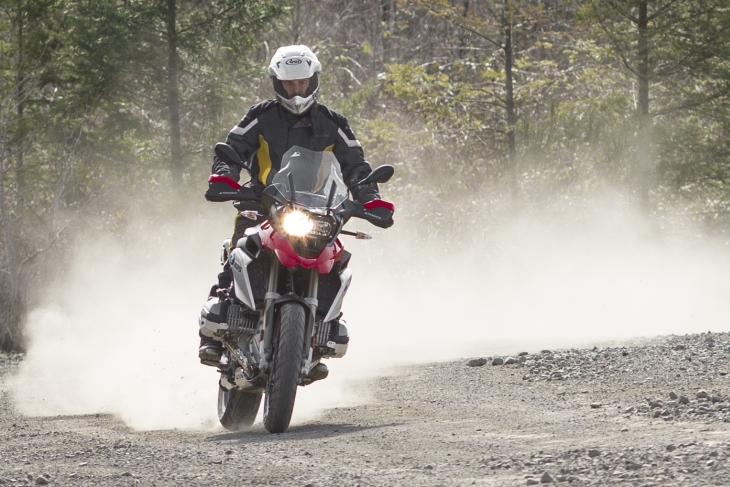
Off-Road Performance
BMW’s design team set a goal to make the new water-cooled R1200GS every bit as capable off-road as its predecessors. They didn’t want this new model to lose any of the off-pavement handling that has defined the GS over the last 30 years. After riding this bike I think BMW succeeded in making the bike every bit as off-road capable as the previous GS. The old bike had a bit more usable power down-low and a slower-spooling engine, which was clearly more off-road friendly. The new electronic suite – with the ABS and ASC tuned for off-road in Enduro and Enduro Pro modes – are a huge benefit for riders with limited off-road experience.
As mentioned previously, standing position is more comfortable on the new machine, particularly in the knee area. The narrower profile makes it more comfortable to stand and ride off-road for extended periods. For stock suspension, the new model is quite good. It is also easily adjustable using the ESA button and readout on the LCD screen.
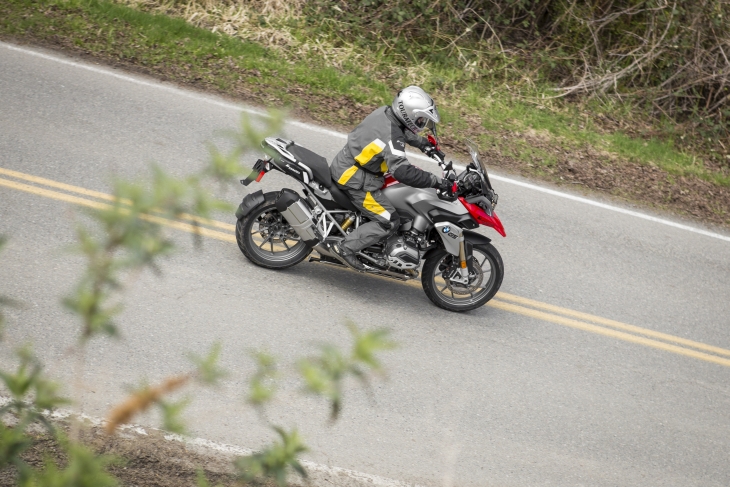
How It Works – Dynamic ESA
Dynamic ESA communicates with the traction control and anti-lock brake system while at the same time gathering information about suspension travel movements. Based on this information, the Dynamic ESA then makes changes in suspension-damping to maximize wheel contact with the ground.
This system leads to firm damping, providing a better road feel while still having the benefit of softer damping as ground conditions change.
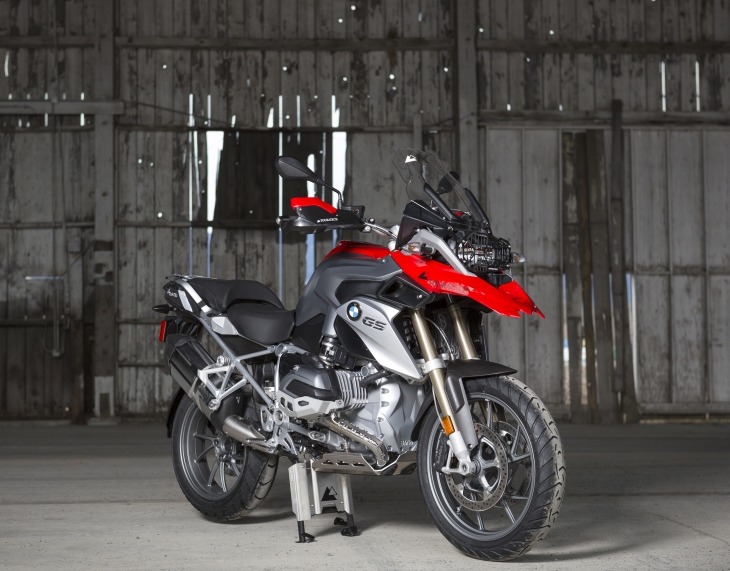
Power Plant
The engine feels like it has much less rotating mass than the previous model. When you blip the throttle, the bike doesn’t twist underneath you nearly as much as the older bike. On this bike I heard more valve-train noise than on the oil-cooled bikes. The engine winds up very fast and triple digit speeds can be reached rather quickly for an adventure bike.
Mid-range and top-end power are considerably stronger than on the old bike. BMW increased the rev ceiling on the bike, but it feels like the power signs off before you hit the rev limiter. The fly-by-wire throttle is one of the systems that changes based on what ride mode is selected. I found it very flexible, providing great comfort and smooth operation when touring and also giving a quick turn for fast acceleration when Dynamic mode is selected. That being said, I found Road mode to be the most similar to the older boxer’s throttle response.
The fly-by-wire throttle has completely changed how BMW’s ASC (traction control) works on the motorcycle. The old bike would control wheel spin by cutting the ignition and this caused the operation to be really harsh. The new system simply uses the electric throttle motors to reduce the amount of power being applied and is subsequently far smoother. Additionally, the new bike has no need for knock sensors, because the fly-by-wire throttle has improved control over throttle openings. The compression has been increased to 12.5:1 and the bike now requires premium fuel to run properly. How the bike handles low quality fuel remains to be seen
The fuel mapping feels good, but could be refined a bit more for situations like rolling on the throttle to pass a car in top gear. For touring-style riding, the fuel mapping was perfect; no surge, smooth acceleration and very little vibration result in comfortable and predictable riding. The bike seemed completely dialed-in for back roads touring right off the showroom floor.
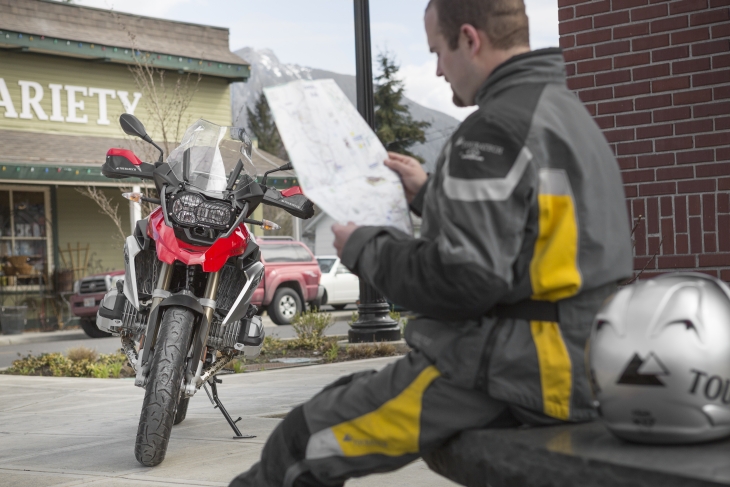
The Battle of the R1200GS BMW’s: In Conclusion
The BMW GS bikes have polarized riders for many years because of how different they are from mainstream bikes; the telelever front suspension, boxer engine configuration, dry clutch, separated transmission and shaft drive all came together to make a distinct personality. This new version of the R1200GS has minimized much of the feel that riders new to the GS found unsettling at first. The Dynamic ESA allows firmer suspension settings, which in turn give more road-feel through the front and rear suspension without compromising the bike’s ability to handle heavy loads and absorb rough terrain. The lighter engine and transmission combination has really smoothed out the side-to-side shake and twist that was common on the oil-cooled bikes. The wet clutch transforms the transmission and gear-shifting action into something very similar to other bikes in this segment and completely eliminates the numb feeling from the gear selector on the older bikes. All of these changes add up to a motorcycle that is much easier to jump on and enjoy, regardless of what riding experience you have to compare it to. GS enthusiasts with years of experience will find that some of the ‘acquired tastes’ of the older boxers have been replaced with a lighter, tighter, and more modern feeling machine.
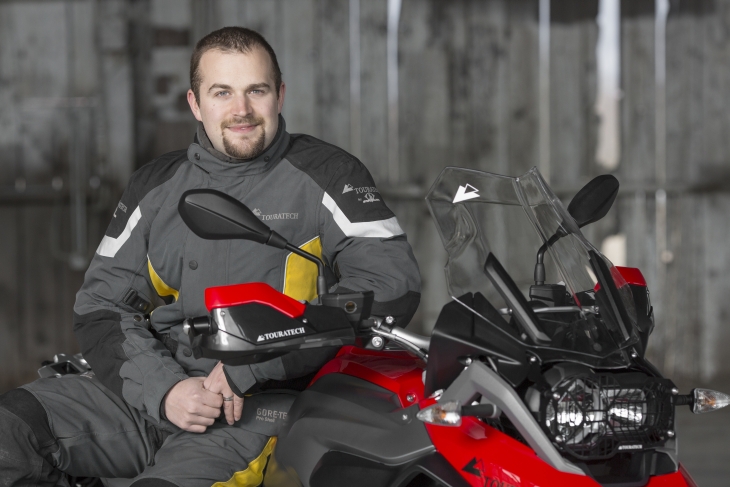
About the Author
Iain Glynn was a member of the 2010 BMW GS Trophy Team that competed in South Africa. On his 2005 R1200GS, Iain likes to lead challenging rides in the mountains with his buddies, as well as get away from it all on two-up tours with his wife, Bethany. He’s been known to sneak onto local enduro courses on his GS and is also an avid dirt bike enthusiast. Iain leads Touratech-USA’s technical support and customer service team and is always looking for an excuse to ride on company time, which has earned him the title of ‘Chief Riding Officer.’
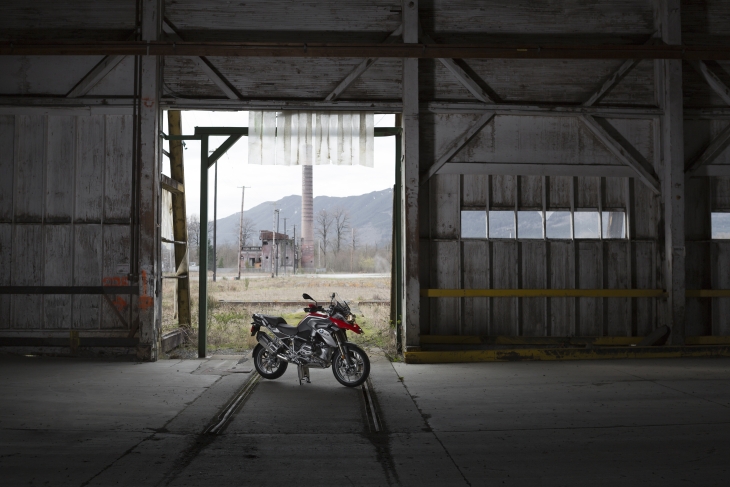
Special Thanks
I’d like to thank DirtFish Rally School for allowing us to use their facility to test the new BMW R1200GS. DirtFish is the world’s premiere rally racing school, teaching mixed surface driving techniques and advanced rally racing instruction. Their school is located just 25 miles east of Seattle and offers students the opportunity to drive turbocharged rally cars around their 315 acre facility.
Click HERE to see our complete line of accessories for BMW’s new water-cooled R1200GS.
Images come courtesy of Angela Goodman Photography.